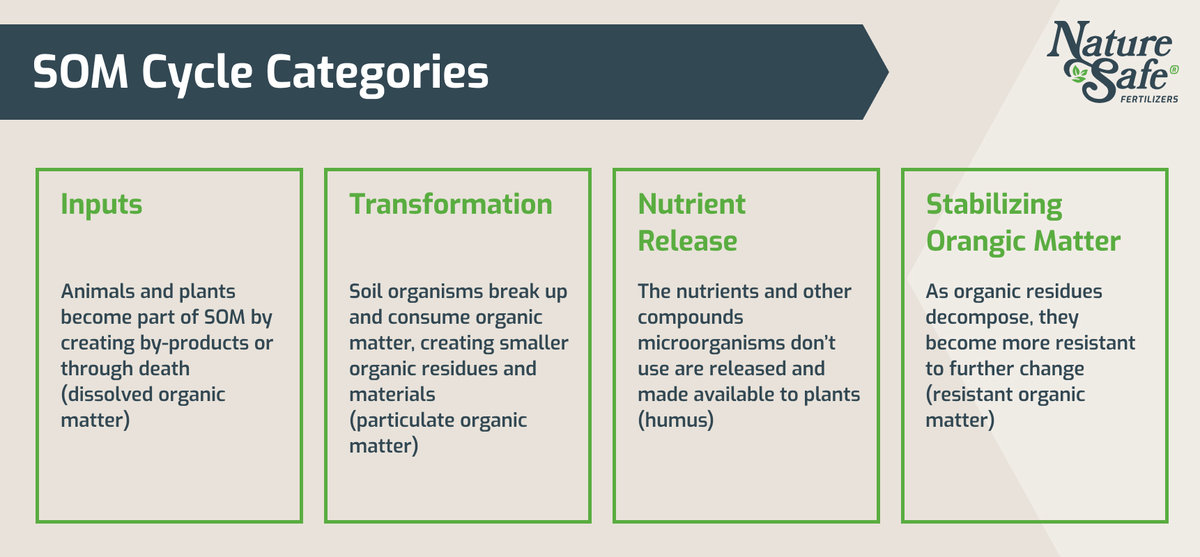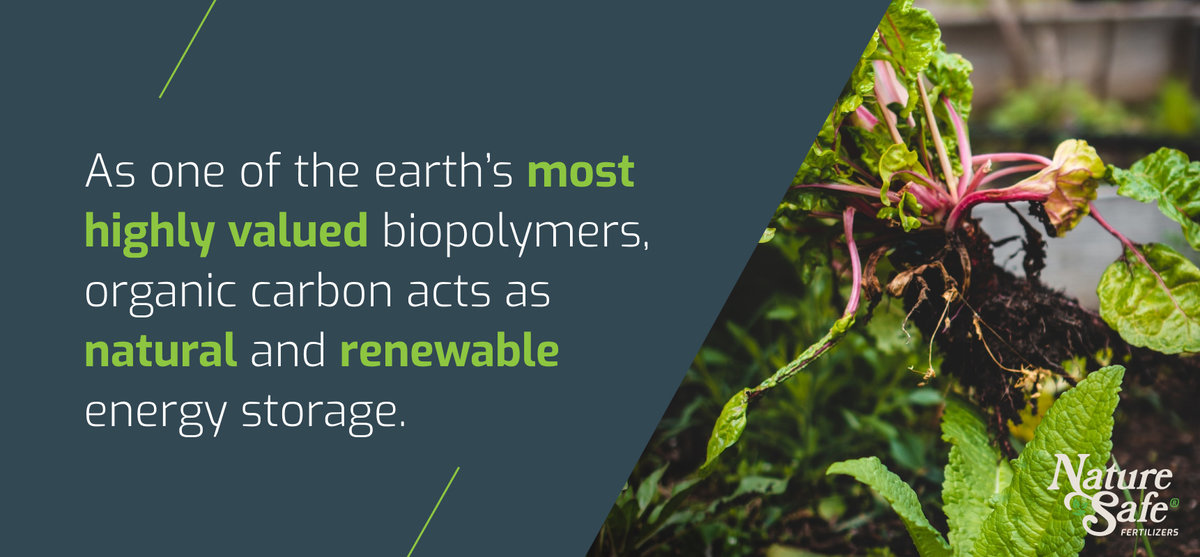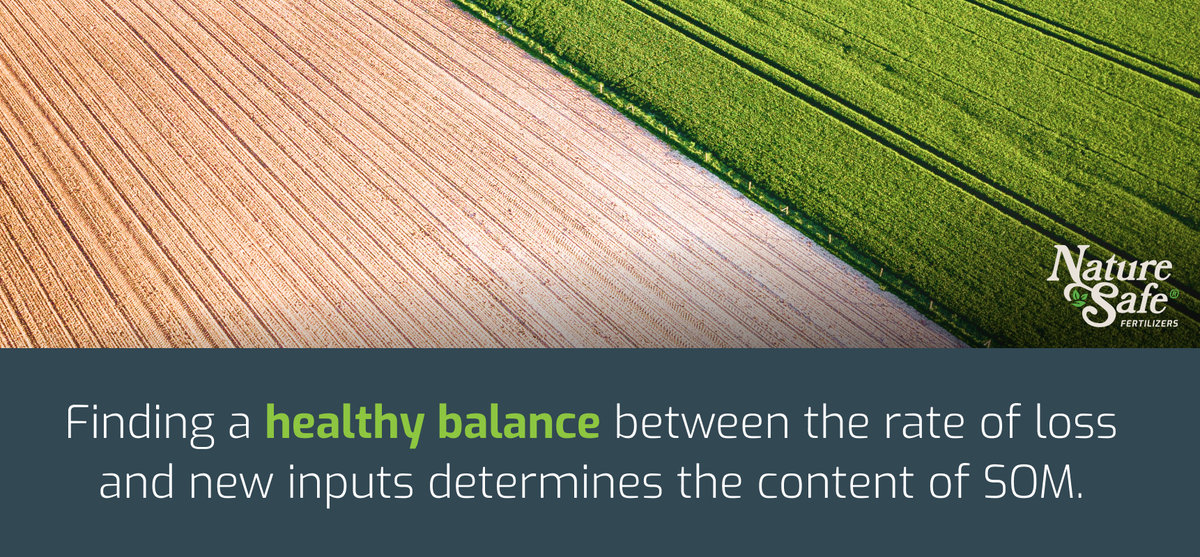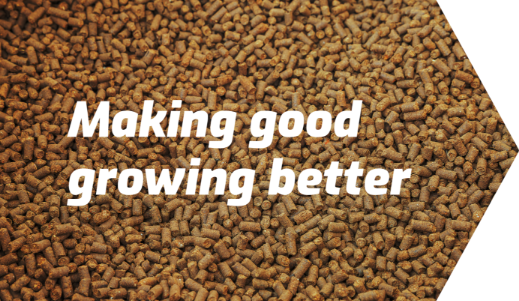
Soil Organic Carbon (SOC)
The Key Measurement to Soil Health
- Posted: Dec 08, 2022
- Author: Nature Safe Fertilizers
- Environment
Organic matter makes up less than 6% of today’s agricultural soil mass—some estimates even put that number at just 2%. Despite this small percentage, organic matter plays a crucial role in the biological, chemical, and physical functions of soil.
Organic matter contributes to the degradation of pollutants, moisture retention and availability, nutrient retention and turnover, and soil structure.
Soil organic carbon (SOC) is a measurable component of a soil’s organic matter (SOM), but what is the difference between these two rather similar-sounding values?
What is soil organic matter (SOM)?
Soil organic matter, or “SOM,” is composed mainly of carbon, hydrogen, and oxygen. However, it also contains small amounts of other elements in organic residues, such as calcium, magnesium, nitrogen, phosphorus, potassium, and sulfur.
SOM exists as four distinct components, which vary widely in size, turnover time, and composition in the soil. These include:
Dissolved organic matter
Particulate organic matter
Resistant organic matter
Humus
Each of these further divide into ‘dead’ and ‘living’ components, ranging from recent additions to largely decayed materials that could be many hundreds of years old. Living components comprise roughly 10% of below-ground SOM and consist of microorganisms, fauna, and root structures.
How does organic matter enter the soil?
Organic matter enters the soil in a process called “SOM cycling.” Each component of SOM turns over at a vastly different rate than the others due to climate, soil type, and management.
SOM cycles move continuously between living, decomposing, and stable components in the soil. The cycles fall into four categories:
Inputs: Animals and plants become part of SOM by creating by-products or through death (dissolved organic matter).
Transformation: Soil organisms break up and consume organic matter, creating smaller organic residues and materials (particulate organic matter).
Nutrient Release: Whatever nutrients and other compounds microorganisms don’t use are released and made available to plants (humus).
Stabilizing Organic Matter: As organic residues decompose, they become more resistant to further change (resistant organic matter).

What is soil organic carbon (SOC)?
Soil organic carbon (SOC) refers only to the carbon component of organic compounds. Soil organic matter (SOM) is challenging to measure directly, so laboratories tend to measure and report SOC using the following formula:
SOM (%) = SOC (%) x 1.72
SOC is measured because it is the major contributor to agriculture, climate change, food solutions, and soil health. As one of the earth’s most highly valued biopolymers, organic carbon acts as natural and renewable energy storage.
SOC improves the biological, chemical, and physical properties of soil, which in turn, increase water-holding capacity and structural stability. It is also integral in the formation of soil’s amino acids.
Finally, SOC acts as a “buffer” for soil against extreme pH fluctuations. Steady pH is critical for soil and ecosystem functions. Depletion of SOC degrades soil quality, reduces biomass productivity, and adversely impacts water quality.

Carbon pools and cycling
Cycling organic carbon is critical for sustaining the earth’s healthy ecosystems and maintaining food security. The number of new organic materials added yearly to the soil directly impacts the total amount of SOC.
Carbon exists in soils in various “pools,” which categorize anything from freshly deposited plant residues to smaller structures absorbed in clay and soil aggregates. The most stable carbon product attributed to residue decomposition is humus.
Unfortunately, agriculture practices often negatively impact carbon pools by depleting plant residues, particularly organic carbon, and humus components. Carbon losses from agricultural systems are a significant cause of global warming and the loss of natural ecosystems.
Climate change and carbon sequestration
The impact of SOC on climate change adaptation and mitigation has been recognized and validated in numerous documented studies.
Research affirms that SOC sequestration mitigates climate change by reducing atmospheric carbon dioxide. In doing so, it also improves soil health and quality while still achieving food security.
The argument for sequestration is that small increases in SOC over vast areas within agricultural and pastoral lands would significantly reduce atmospheric carbon dioxide. However, for the reduction to be long-lasting, the organic matter must be in more stable or resistant fractions.
How can I improve organic carbon levels?
Natural SOC levels remain in constant turnover as the soil decomposes and new organic material replaces it. Finding a healthy balance between the rate of loss and new inputs determines the content of SOM.
In many instances, SOM continues to decline because of how often land managers take more from the system than it can return. Negative SOM feedback can be corrected by following some of the regenerative practices below:
Adopt grazing management strategies that minimize negative impacts on soil structure and maximize organic matter returns (i.e., eliminate overgrazing).
Eliminate unnecessary cultivation by introducing zero or minimum tillage.
Grow high-yield, high-biomass crops or pastures while maximizing crop frequency to increase organic matter returns to the soil.
Improve soil fertility with organic fertilizers, manure, or compost that maximize production.
Include pasture rotations, use cover crops in the inter-rows for tree and vine crops, and plant perennials where possible.
Maintain and conserve ground cover to maximize wind and rain erosion.
Regularly test SOC to assess whether management change is depleting or restoring soil resources.

Organic Carbon and Regenerative Agriculture
While science and conventional farming practices can sometimes seem at odds with each other, ensuring a secure and adequate food supply remains a core interest of participants in both. SOC is the global key to monitoring soil health and productivity.
Modern agriculture depletes organic carbon pools, but regenerative agricultural practices aim to save them by enhancing sustainability, food solutions, natural resources, and ecosystems.
NatureSafe organic fertilizers improve soil health by using products with plenty of organic carbon content. Give us a call today and find out more about how we can help you improve the usage efficiency of your soil carbon, and develop effective strategies to make good growing better.
